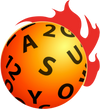Eye Movements and Decision Fatigue in Parkinson’s

Everyday decisions—what to eat, what to wear, which way to turn—can feel surprisingly exhausting for people with Parkinson’s disease. This is known as decision fatigue, and it can make even simple choices feel overwhelming or mentally draining. While most people think of this as a cognitive issue, research is now showing a fascinating link between eye movements and the brain’s ability to make and carry out decisions. The exciting news? Training eye movements can reduce decision fatigue by helping the brain process information more efficiently.
In Parkinson’s, the brain’s decision-making circuits slow down due to loss of dopamine in areas like the basal ganglia and prefrontal cortex—the same areas involved in both evaluating options and planning movements. This often leads to hesitation, indecision, and mental fatigue from processing too much visual information. One reason this happens is that eye movement control—especially quick, accurate shifts of gaze—is disrupted, making it harder to quickly scan, compare, and decide.
By training the eyes to move quickly and with purpose—such as shifting between two or more visual targets—people with Parkinson’s can actually retrain their brain’s “see → decide → act” loop. This kind of practice strengthens the pathways involved in attention, filtering distractions, and making decisions faster. Research shows that deliberate gaze shifts improve cognitive control, reduce mental effort, and help people respond with greater clarity and speed (McDowell et al., 2008).
This is where the BrainSpeed Ball® really shines. As users follow the unpredictable path of the ball, search for specific colors or letters, and call them out, they’re rapidly practicing decision-making through movement. Each repetition of seeing a target, identifying it, and responding out loud mimics the mental process of making a choice—helping to reduce hesitation and sharpen clarity in everyday life. In just a few minutes a day, users are training their brain to decide faster and with less effort.
Reducing decision fatigue isn’t about making fewer choices—it’s about training your brain to process those choices more easily. Eye movement training gives people with Parkinson’s a fun, accessible way to build that resilience back. With tools like the BrainSpeed Ball®, those mental slowdowns can become fewer and farther between—replaced by faster thinking and more confident action.
Learn about our Parkinson's Specific Training Program Here:
Sources:
McDowell, J. E., Dyckman, K. A., Austin, B. P., & Clementz, B. A. (2008). Neurophysiology and neuroanatomy of reflexive and volitional saccades: Evidence from studies of humans. Brain and Cognition, 68(3), 255–270. https://doi.org/10.1016/j.bandc.2008.08.016
Chong, T. T. J., Bonnelle, V., Manohar, S., Veromann, K. R., Muhammed, K., Tofaris, G. K., … & Husain, M. (2015). Dopamine enhances willingness to exert effort for reward in Parkinson’s disease. Cortex, 69, 40–46. https://doi.org/10.1016/j.cortex.2015.03.003

